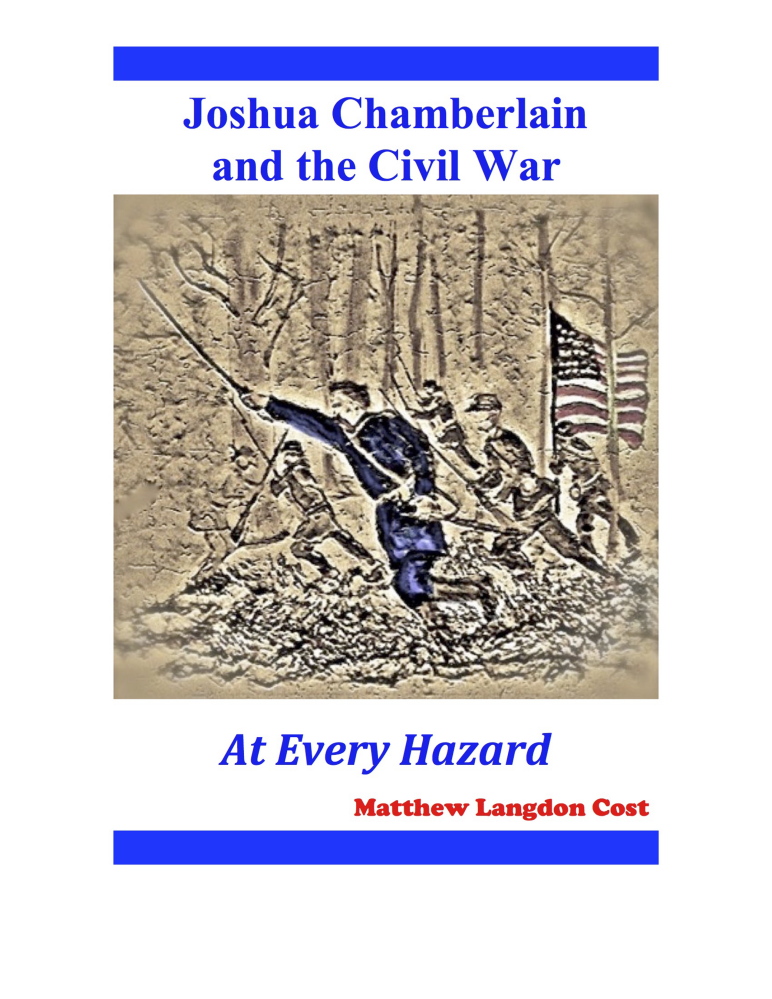Writing historical novels is not a task to be taken lightly. Any author having the audacity to set readers adrift in a time in which he or she did not live, must not only sustain a story and lifelike characters, but must, at all times, sustain the sureness of time and place. If Napoleon checks his wristwatch or George Washington observes Redcoats through his binoculars, readers have a problem. The historical moment flickers and begins to fail.
Problems along these lines cropped up early in my reading of Matthew Langdon Cost’s new novel, “Joshua Chamberlain and The Civil War: At Every Hazard.”
When Chamberlain and his young tag-along, the fictional Emmett Collins, arrive in Portland in 1862, they go by “a massive church on Congress Avenue, St. Luke’s Episcopal, its stone and glass façade soaring so that Emmett could only stare in awe. While the six- and eight-story brick buildings of Congress Avenue loomed over the boy from Brewer, it was only when they turned onto Commercial Street that he was truly struck dumb with wonder.”
As was this historian, with 40 years of researching the history of the state’s largest community. Consider the series of flaws: Congress Street was never Congress Avenue, though the reader might assume that this was an editorial oversight and move on. Then there is the matter of St. Luke’s, which was not constructed until 1868, on State Street.
Moving along, there were few if any “six- and eight-story structures.” During the Civil War, Portland was a bustling community of wood and some brick. It was not until after the Great Fire of 1866 that the brick Victorian city we now know began to rise.
For this reader, the false notes all but killed the illusion, and I thought of abandoning the review. But Cost, a retired teacher who has written two previous mysteries, “Mainely Power” and “Mainely Fear,” was spinning a good tale about the orphan boy taken under the wing of the soon-to-be Col. Joshua Chamberlain (1828-1914). The characters, fictional and not, were convincing. The read had been enjoyable up to the Portland interlude.
Suddenly it struck me that if the Union Army had simply quit after the first battle of Bull Run, we would be paying tariffs on Florida oranges.
I soldiered on to Appomattox and the Confederate surrender and was amply rewarded. “At Every Hazard” stands on its own in carefully breathless battle scenes, long marches and daily events.
The relationships between Chamberlain and his fascinating, problematic wife, Fanny Adams (1825-1905), a high-strung artist, are handled in depth. From my previous readings of biographies and letters, they came off very convincingly.
Cost knows his historical figures in their complex lives and facets. This is no cardboard hero. Chamberlain has his flaws and great strengths. The honest treatment of Col. (later Gen.) Adelbert Ames and his role in shaping the 20th Maine Regiment before Chamberlain’s arrival is accurate and deserved.
Overall this an enjoyable, sustained and informative book. Before a second edition, it would be good to fact-check the descriptions with other researchers. I don’t know, for instance, how experts on Baltimore, Fredericksburg or Washington, D.C., might react to Cost’s descriptions but they are thoroughly described in most Civil War histories.
I believe the portrait of Portland was the bad spot on the peach. Cut that away and enjoy the rest.
William David Barry is a local historian who has authored/co-authored seven books, including “Maine: The Wilder Side of New England” and “Deering: A Social and Architectural History.” He lives in Portland with his wife, Debra, and their cat, Nadine.
Send questions/comments to the editors.



Success. Please wait for the page to reload. If the page does not reload within 5 seconds, please refresh the page.
Enter your email and password to access comments.
Hi, to comment on stories you must . This profile is in addition to your subscription and website login.
Already have a commenting profile? .
Invalid username/password.
Please check your email to confirm and complete your registration.
Only subscribers are eligible to post comments. Please subscribe or login first for digital access. Here’s why.
Use the form below to reset your password. When you've submitted your account email, we will send an email with a reset code.